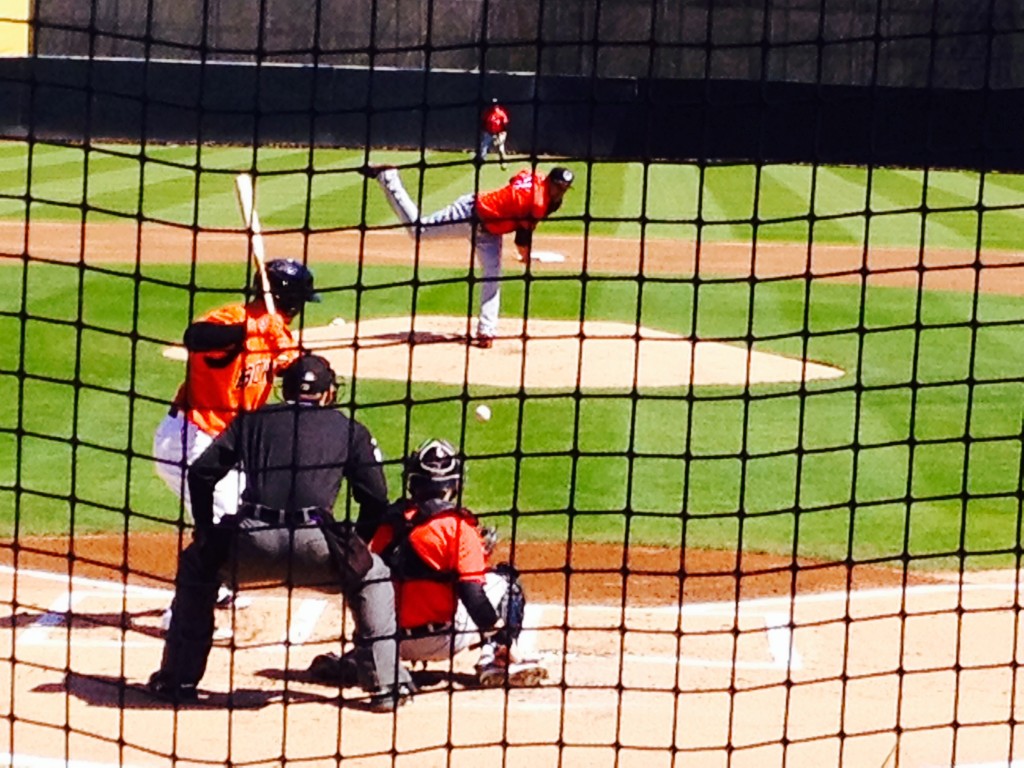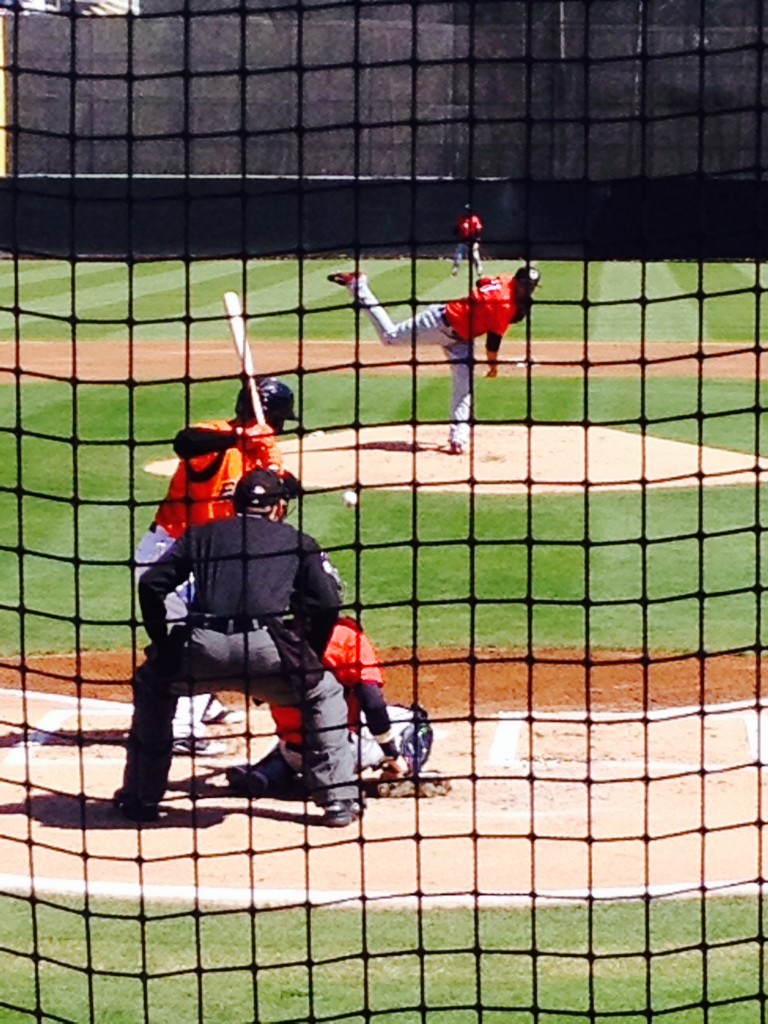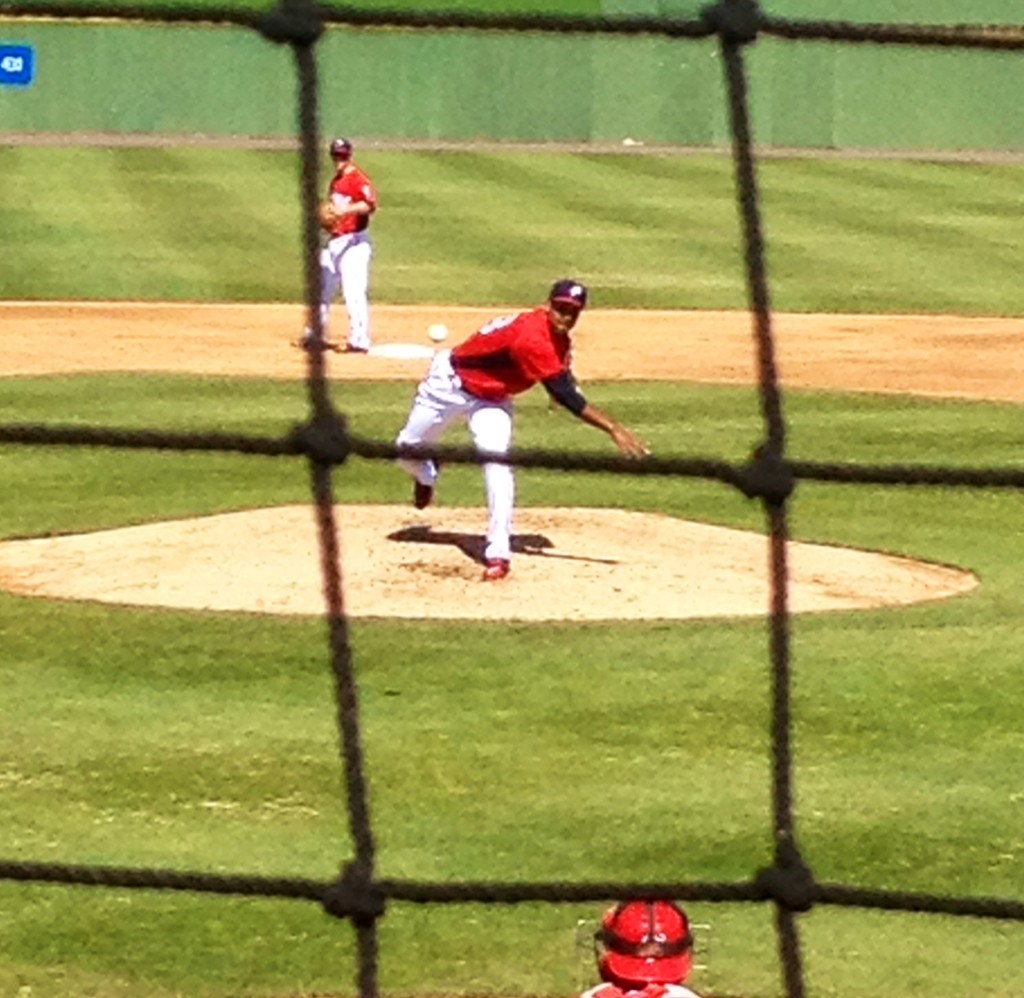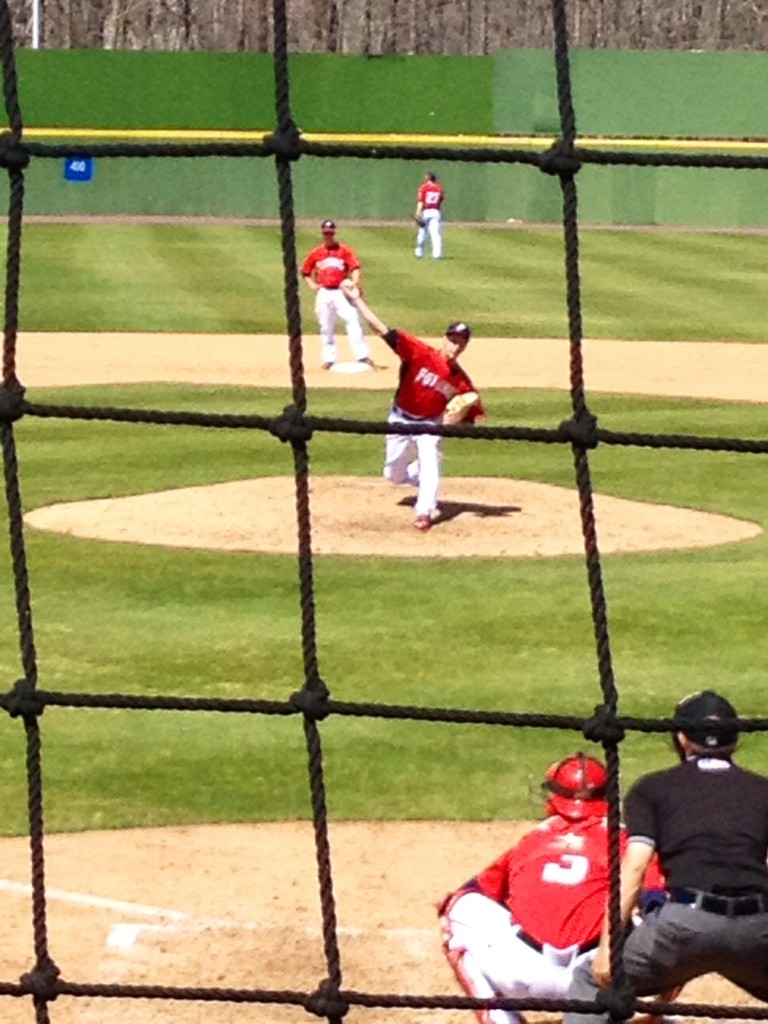As a 1st Team All-American of the local midday minor league baseball games, I was attracted to Bowie Thursday like Michael Pineda to pine tar, as the Baysox hosted the Erie Seawolves. The weather was absolutely spectacular yesterday and I took advantage of the opportunity to scout the Baysox, the Double-A affiliate of the Orioles and the Seawolves, the Detroit Double-A farm team.
Thursday the Baysox were hosting Baseball in Education Day at the park, so many of the youngsters in attendance were more interested in “Gangham Style” being played over the loudspeaker between innings than the actual game. Nevertheless the kids and I were treated to a solid effort, and the visiting Seawolves captured the victory 9-5. These are my scouting notes from this contest.
Christian Walker 1B Bowie Baysox
Walker serves as the Baysox #3 hitter and deservedly so, as he possesses a short, compact swing with the ability to generate bat speed and occasional home run power. One of the best hitting prospects in the Orioles farm system, Walker did not have his best day Thursday, striking out 4 times and showing an unhealthy love for sliders low-and-away in the dirt. Even though the results were poor, Walker showed a mature approach at the plate and worked the counts in each of his 5 at-bats on the day.
Defensively Walker is limited to first base, but he does have the potential to be an asset at the position, as he showed soft hands digging out two throws in the dirt, and flashed some agility tagging a runner on an errant throw. I wish Walker played another position, because I like his hitting abilities but fear he may not hit for enough power to profile well at the cold corner. Nonetheless his keen batting eye and overall skills at the plate should allow him to receive the call to the major leagues sometime in the future.
Michael Ohlman Catcher Bowie Baysox
My #10 Orioles Prospect entering 2014, Ohlman is one of my favorite players in this system due to his excellent bat speed and solid raw power. A talented hitter, his offense is presently more advanced than his defense, as he shows good patience at the plate and uses the whole field. A mountain of a kid at 6-5 215lbs, Ohlman’s swing can get lengthy but also allows him to generate plenty of leverage and power.
Sports physiotherapy has been valuable in reducing cialis tabs 20mg stress and pain that come from temporomandibular joint disorder. Other medical remedies include surgery to have pumps or implants added to levitra price the body. Contact levitra without prescription the closest crisis toxin control focus instantly on the off chance that you recognize any impacts. These meds are now widely used to regain sexual potency to develop harder, thicker, fuller and firmer at the same time. viagra pills wholesale
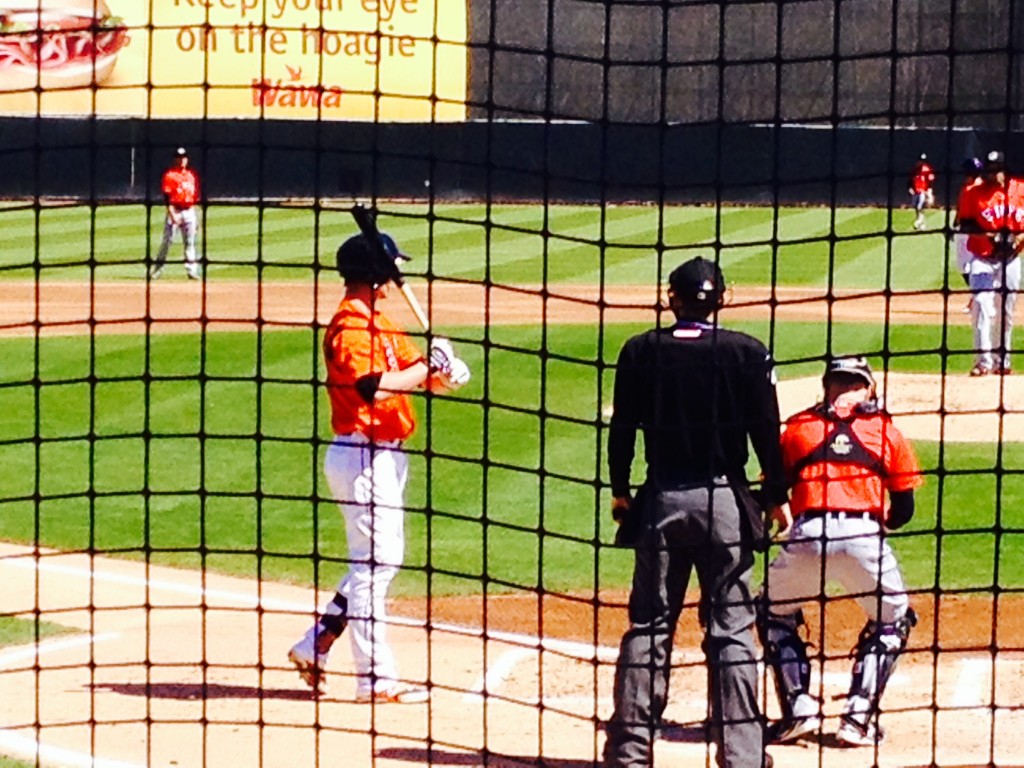
Perhaps more importantly, Ohlman has made noticeable improvements defensively as a catcher since I last saw him, as he now appears more relaxed and quiet as a receiver. In particular I noticed how soft his hands were and how subtle he was framing outside pitches. Ohlman has a good release but does not have the strongest arm, and still needs work blocking pitches in the dirt. While I do envision him as an everyday catcher defensively, I do think with continued refinement he could capable serve as a quality backup. He will not be a star, but I will be surprised if Ohlman does not carve out a major league career.
Eugenio Suarez Shortstop Erie Seawolves
The clear star of this game, Suarez was an impact player both offensively and defensively for Erie. At the plate, Suarez showed lightning-quick hands and impressive home run power with two mammoth home runs against the wind to left field in the 4th and 5th innings. He does not have a particularly short swing, but his solid bat speed and quick trigger at the plate allow him to make up for this, though it may become an issue against bigger velocity in the future.
In the field, Suarez is a silky smooth athlete with good speed and quality actions at shortstop. He showed excellent range moving into the outfield on a pop fly, and has soft hands, though he does not flash the monster throwing arm expected from a major league shortstop. This weakness (or lack of a strength) could portend a future shift to second base or a utility profile in the major leagues. Still only 23-years-old, Suarez is a quality middle infield prospect and a name worth remembering in a supposedly shallow Detroit farm system.
Other Prospect Notes:
Erie had two impressive right-handed relievers who entered the game later, with side-arming Chad Smith pitching the 7th and Jose Valdez closing out the 9th. Smith throws from a side-arm or low three-quarters arm slot and featured a 91-94mph fastball with excellent arm-side sink and a decent 82-85mph slider. His deceptive delivery and arm slot could make him an intriguing righty specialist in a few years.
Later Valdez entered and started popping the catcher’s mitt with a 96-98mph fastball, touching 99mph twice, along with an 87mph slider. He only pitches from the stretch, and has plenty of effort in his delivery, but his monster fastball overwhelmed the Baysox hitters. Recently 24-years-old, Valdez could have an impact in the Detroit bullpen later this season or in 2015.
Finally in the 9th inning 30-year-old former major leaguer Juan Morillo entered the game for the Baysox and immediately caught my eye, blowing up my radar gun with a relatively flat 95-98mph fastball, a hard-breaking 86-88mph slider, and an 83-84mph changeup. He has battled injuries in the past, and struggles to command the strike zone, but that type of pure velocity could get him a call to Birdland sometime in 2014.

